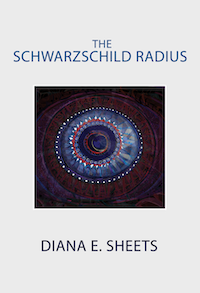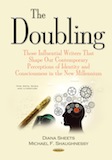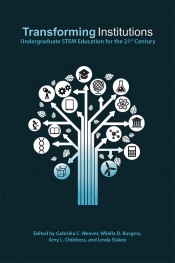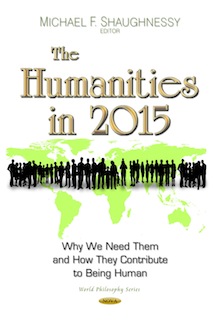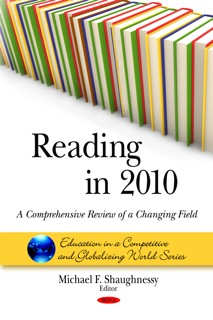The Loss of an Authoritative Culture in America and Its Impact on the Aspirational Middlebrow Reader, Part I
Copyright © 2012 by Diana E. Sheets
I Introduction: Loss of an Authoritative Culture
What does it mean for a civilization to have lost its heritage? In its place is a myriad of social and ethnic identities based on cultural relativism steeped in presentism, ignorant or resentful of what came before and hostile to any imposition of authority, which is perceived as inimically opposed to those social and ethnic groups seen as least capable of advancing their cultural agendas.
This American countercultural perspective came into ascendancy in the late 1960s as a byproduct of generational resistance and rebellion to the Vietnam War. By the late 1980s these destructive values had succeeded in undermining the entire social fabric of America, including our academic institutions that form the cultural values of our society.
The social implications of the battle between the adherents of American Exceptionalism with their emphasis on Western Civilization and the proponents of countercultural America with their advocacy of multiculturalism and self-realization became pronounced in the aftermath of the Vietnam War. These new social values were critically assessed by Christopher Lasch’s The Culture of Narcissism (1978). America’s “failure of nerve,” he argued, was the byproduct of an effete “bourgeois society” that no longer had “the capacity and the will to confront the difficulties that threaten to overwhelm it” (Lasch, 1978, p. xiii). We lived, according to Lasch, in an age characterized by the “waning of historical time.” The result was the emergence of the narcissistic self, absent all historical and cultural referents, whose life was steeped in “presentism,” a continuously unfolding of the now with no past and, by implication, no future, just a constant bedazzlement as events happened without individuals ever able to conceptualize the cause, the sequence, and the consequence of events in their lives (Lasch, 3. See also my essay “The Great Books and Cultural Identity: The Rise and Fall of Western Memory and Its Implications for Our Time,” Reading in 2010: A Comprehensive Review of a Changing Field, edited by Michael F. Shaughnessy, Nova Science Publishers, Inc., 2010, 163, the essay is available as a free download, https://www.novapublishers.com/catalog/product_info.php?products_id=14560).
Perhaps no one more than Allan Bloom highlighted the social consequences for America. Where once our civilization was founded on natural rights and the notion that we were united by shared goals of a universal heritage, by the late 1980s our cultural identity founded on American exceptionalism had been jettisoned in favor of minority interests and receptivity to a myriad of life-styles and ideologies that eschewed a common destiny. The consequence was a culture war in which one set of values must ultimately prevail over another.
Liberal democracies do not fight wars with one another. . . . Cultures fight wars with one another. They must do so because values can only be asserted or posited by overcoming others, not by reasoning with them. Cultures have different perceptions, which determine what the world is. They cannot come to terms. There is no communication about the highest things. . . . Culture means a war against chaos and a war against other cultures. The very idea of culture carries with it a value: man needs culture and must do what is necessary to create and maintain cultures. There is no place for a theoretical man to stand. To live, to have any inner substance, a man must have values, must be committed, or engagé. Therefore a cultural relativist must care for culture more than truth, and fight for culture while knowing it is not true. (The Closing of the American Mind: How Higher Education Has Failed Democracy and Impoverished the Souls of Today’s Students, Simon and Schuster, 1987, 202)
By 1988 Jay Parini, an academic at Middlebury College, celebrated the all but triumphant power of the academic left in The Chronicle of Higher Education.
After the Vietnam War, a lot of us didn’t just crawl back into our literary cubicles; we stepped into academic positions. With the war over, our visibility was lost, and it seemed for a while—to the unobservant—that we had disappeared. Now we have tenure, and the work of reshaping the universities has begun in earnest. (Parini quotation in Roger Kimball’s, Tenured Radicals: How Politics Has Corrupted Our Higher Education, 3rd Edition, 2008, Ivan R. Dee, ix.)
But the consequences for American society of an academic “elite” intent on annihilating our cultural heritage proved devastating. For as Arthur M. Schlesinger, Jr., a prominent Democrat who served in the Kennedy administration (1961-63) noted, the social agenda for the academic left rejected assimilation of ethnic groups in favor of radical multiculturalism with its embrace of identity politics and “the cult of ethnicity” (The Disuniting of America: Reflections on a Multicultural Society, W.W. Norton & Company, 1998, first published in 1991, 20). This lead to the “disuniting of America” and resulted in the loss of our collective social memory. The consequence was not only an erasure of our cultural history but also a disavowal of what Schlesinger refers to as “the American Creed,” those universal values based on a shared understanding of our common cultural heritage (33-34, the term “the American Creed” is borrowed from Gunnar Myrdal). As a consequence our national identity threatened to dissolve into a myriad of tribal grievances, each with its own social or ethic group working in opposition to a unifying whole.
For history is to the nation rather as memory is to the individual. As an individual deprived of memory becomes disoriented and lost, not knowing where he has been or where he is going, so a nation denied a conception of its past will be disabled in dealing with its present and future. (51-2)
In the absence of this collective cultural memory based on a widely accepted understanding of the principles of our Founders and their embrace of our Western heritage, history—and indeed academe in the scenario envisioned by Parini—becomes an ideological weapon of mind control yielding politically correct outcomes that would have a devastating outcome for our society. For Schlesinger the prospect evoked the horror of McCarthyism (121-2). For this reason he cited conservative German historian Michael Stürmer’s dictum that “in a land without history, he who fills the memory, defines the concepts, and interprets the past, wins the future” (57).
By 1991 James Davison Hunter had given the name “culture wars” to the battles raging over multiculturalism, identity politics, and political correctness that were polarizing America. A sustained “cultural conflict,” he noted, “is ultimately about the struggle for domination” (Culture Wars: The Struggle to Define America, BasicBooks, 1991, 52). Hunter elaborated.
Politics is, in large part, an expression of culture (competing values and ideals and, often, interests based in values). At the heart of culture, though is religion, or systems of faith. And at the heart of religion are its claims to truth about the world. . . . The struggle for power (which is the essence of politics) is in large part a struggle between competing truth claims, claims which are by their very nature “religious” in character if not in content. (57-8)
At the very heart of these competing cultural or religious claims are fundamental values about how a society should conduct itself with respect to family, education, mores, and their institutional manifestation in our media, laws, and politics. How these values frame the political discourse fuels today’s pervasive culture wars.
Hunter’s argument was so penetrating and persuasive that the following year Patrick J. Buchanan expounded on its political ramifications at the Republican National Convention: “There is a religious war going on in our country for the soul of America. It is a cultural war, as critical to the kind of nation we will one day be as was the Cold War itself” (Republican National Convention Speech, August 17, 1992, Patrick J. Buchanan Official Website, http://buchanan.org/blog/1992-republican-national-convention-speech-148). This culture war, as Buchanan noted, was pivotal to our nation’s future, not only our notion of right and wrong but also all the belief systems that encompassed our entire worldview (“The Cultural War for the Soul of America,” Patrick J. Buchanan Official Website, http://buchanan.org/blog/the-cultural-war-for-the-soul-of-america-149).
Just as the Cold War became the battleground between capitalism and communism for the generation after World War II, the culture wars with their divisive struggle between secular progressives and traditional conservatives would frame the clash of worldviews in America by the late Twentieth and early Twenty-first Centuries. While the “culture wars” became pronounced by the 1990s, these battles, caused by profound differences in beliefs, had been fomenting since the late 1960s.
The philosophical foundations for multicultural, secular humanism were enumerated by John Rawls in his seminal work A Theory of Justice (1971). The tenets of his “justice as fairness” doctrine shifted the concept of “social justice” from “be fair” to a creative misreading and implementation of the Marxist tenet “From each according to his abilities, to each according to his needs” (See my analysis in “The Great Books and Cultural Identity,” 162). Rawls shifted the emphasis in social values from individual initiative and self-reliance founded on a commitment to families and spiritual values to the secular progressive belief in the welfare state’s ability to ameliorate economic and social disparities that accelerated the culture wars in America.
Nor was Schlesinger, a Democratic Party mandarin, alone in his concerns. Richard Bernstein, former columnist for The New York Times, someone personally familiar with the strong-arm illiberal tactics of Communist China where he was Time magazine’s first bureau chief in 1979, drew an analogy between American political correctness of the early 1990s and the terror of the Jacobins in the French Revolution (Dictatorship of Virtue: Multiculturalism and the Battle for America’s Future, Alfred A. Knopf, 1994, 3-6. Referenced in my interview with Michael F. Shaughnessy about the Great Books, “A Triumvirate of Values,” published in EducationNews.org, June 29, 2010, http://www.educationnews.org/commentaries/93692.html).
Academic Todd Gitlin, whose politics lean decidedly to the left, nevertheless noted in The Twilight of Common Dreams: Why America Is Wracked by Culture Wars that the celebration of identity politics within the university today nurtures “a rapture of marginality” (Metropolitan Books, 1995, 149) in which groups with social grievances carve out ever more numerous identities from which to attack the perceived authority. At the heart of the power structure, according to this matrix, is the white male. Thus, one Berkeley activist aptly characterized the sentiments of countercultural rebellion aligned with the interests of identity politics and conjoined with postmodern relativity when he said, “Objectivity is only another word for white male subjectivity” (150).
The consequences of the triumph of countercultural rebellion were a decline in authority and personal responsibility, an ignorance of the uniquely American circumstances associated with the founding of our republic, and a loss of understanding of our Western cultural values that gave rise to an aspirational society. As a result our social institutions eroded—marriage, family, and education—while the global economy increasingly displaced job opportunities and imposed financial constraints on most Americans. The outcome would result in profoundly destabilizing influences in our society, a case made persuasively by Charles Murray in his recent work Coming Apart: The State of White America, 1960-2010.
II Charles Murray and the Failure of “the American Project”
For Charles Murray the embodiment of American greatness, what he refers to as “the American project,” is rooted in American Exceptionalism (Coming Apart, Crown Forum, 2012, Kindle Edition, “Prologue: November 21, 1963,” 243-56), an idea expressed eloquently by John Winthrop in 1630 with his biblical reference “we shall be as a city upon a hill.” This commitment to American Exceptionalism was affirmed by President-Elect John F. Kennedy in 1961 (transcript of Kennedy’s City Upon a Hill speech given at the Massachusetts General Court, January 9, 1961, http://www.jfklibrary.org/Asset-Viewer/OYhUZE2Qo0-ogdV7ok900A.aspx) during his final formal address before he became president and, later, by Ronald Reagan in his 1984 acceptance speech as the Republican Party nominee for president (http://www.reagan.utexas.edu/archives/speeches/1984/82384f.htm) and in his 1989 farewell address (http://tinyurl.com/7gdc6hv).
The significance of American Exceptionalism was first noted and elaborated upon by the French political thinker and historian Alexis de Tocqueville in Democracy in America (1835): “The position of the Americans is therefore quite exceptional, and it may be believed that no democratic people will ever be placed in a similar one” (Democracy in America, Vol. 2, translation by Henry Reeve, revised and annotated from author’s last edition by Francis Bowen, The Century Co., 1898, 42).
For Murray, “the American project” is rooted in the founders’ notion, as elaborated by Thomas Jefferson, that the “sum of good government” is limited in nature, that it “shall restrain men from injuring one another [and] shall leave them otherwise free to regulate their own pursuits of industry and improvement” (Coming Apart, Chapter 17, “Alternative Futures,” 4498-4508). It was a cultural worldview, he suggests, “so widely shared among Americans that it amounted to a civil religion. To be an American was to be different from other nationalities, in ways that Americans treasured” (Coming Apart, “Prologue: November 21, 1963,” 247-60).
However, the aftermath of President Kennedy’s assassination in 1963 demarcates for Murray the beginning of our nation’s disavowal of American Exceptionalism. The result, he suggests, has been “an evolution in American society that has taken place since November 21, 1963, leading to the formation of classes that are different in kind and in their degree of separation from anything that the nation has ever known” (Coming Apart, “Prologue: November 21, 1963,” 226-39). The result of this divergence, he argues, will be an end of “what has made America America” (Coming Apart, “Prologue: November 21, 1963,” 226-39).
For Murray, “the American project” was based on principles that date back to our Founders, namely, that “human beings can be left free as individuals and families to live their lives as they see fit, coming together voluntarily to solve their joint problems” (Coming Apart, “Prologue: November 21, 1963,” 245-58). The American attributes that ensured our nation’s success were based on what he refers to as our “founding virtues”—industriousness, honesty, marriage, and religion—(Coming Apart, Chapter 6 “The Founding Virtues,” 2182-2207) that maximized personal freedom coupled with personal responsibility while hard work and ingenuity minimized the rigid distinctions of class, allowing for significant social mobility and fostering a vibrant economy (Coming Apart, Chapter 6 “The Founding Virtues,” 2196-2395). Now, however, “that culture is unraveling” (Coming Apart, “Prologue: November 21, 1963,” 245-57).
Coming Apart: The State of White America, 1960-2010 makes a pervasive argument that today America is a qualitatively different place. Most Americans no longer have the personal and family values that would facilitate their desire to become educated and participate in an increasingly competitive and global “knowledge” economy. Aspiration and initiative have eroded along with social mobility as class disparities have ossified. Coming Apart: The State of White America, 1960-2010 contends that only the top five percent of Americans have the potential to thrive in this competitive business climate by virtue of their educational attainments, their business acumen, their durable marriages, and their commitment to work.
Murray suggests that the two greatest determinants of future success are graduating from college and having children while married. Women with sixteen or more years of schooling in his study have fewer than 5 percent of nonmarital births. Whereas mothers who never completed high school had nearly 60 percent of the live births of all nonmarital children (Coming Apart, Chapter 8 “Marriage,” 2718-30).
Murray’s analysis is derived from 2008 data that focuses on two hypothetically constructed non-Latino white communities—upper-middle class Belmont and working class Fishtown—in the 30-49 age demographic. While the nonmarital birth trend is rising even in upper-middle class Belmont, the trend is much more significant in working class Fishtown. The difference between the two communities is striking since women in Belmont tend to delay having children in order to pursue advanced education in the expectation of better economic opportunities and improved prospects of marrying successful men with whom they hope, in most cases, to have children (See Murray’s book summary, “Belmont and Fishtown,” which appeared in The New Criterion in January, 2012, http://www.newcriterion.com/articles.cfm/Belmont---Fishtown-7250).
In the statistically prototypical, upper-middle-class white community of Belmont, for example, residents have sixteen or more years of education, whereas in working class Fishtown whites have just over twelve years of schooling (“Belmont and Fishtown”). Yet the difference in nonmarital births is staggering. Approximately 6 to 8 percent of births are conceived out of wedlock in Belmont as compared with an estimated 43 to 48 percent in Fishtown (Coming Apart, Chapter 8 “Marriage,” 2745-56). Thus if race is excluded from the analysis, mothers who are highly educated and who give birth to children while married greatly improve the economic and social opportunities for their children to become part of “the cognitive elite” (Coming Apart, Part I, “The Formation of a New Upper Class,” 266-79, Chapter 2, “The Foundations of the New Upper Class, 770-1179. See also the article by Ron Haskins, Co-Director of the Center on Children and Families at the Brookings Institute, “Getting Ahead in America,” National Affairs, Issue No. 1, Fall 2009, http://www.nationalaffairs.com/publications/detail/getting-ahead-in-america. Haskins suggests that completing a four-year college degree, obtaining and keeping a job, marrying and remaining married, and having children offer the best predictors of success. Furthermore, if all these social practices were assiduously followed, the poverty rate would decline by nearly 70 percent).
Overall, the American family is trending toward nonmarital births. More than half of all women under thirty are unwed when they give birth to children today (Jason DeParle and Sabrina Tavernise, “For Women Under 30, Most Births Occur Outside Marriage, The New York Times, February 17, 2012, http://www.nytimes.com/2012/02/18/us/for-women-under-30-most-births-occur-outside-marriage.html?pagewanted=all). As Murray demonstrates, the social and economic consequences for these children, their communities, and indeed our society are dire since these children will not have the familial, educational, and economic opportunities of marital birth children. Similarly, fathers of marital birth children are more committed to furthering the economic prospects of their offspring in an increasingly global and competitive marketplace than their nonmarital counterparts (Robert Rector, “Married Fathers: America’s Greatest Weapon Against Child Poverty,” The Heritage Foundation, June 16, 2010, http://www.heritage.org/research/reports/2010/06/married-fathers-americas-greatest-weapon-against-child-poverty). These discrepancies in familial, economic, and social circumstances consequently ensure that nonmarital birth children will, in all likelihood, fall further and further behind their marital birth counterparts, causing themselves and their communities to fail catastrophically. Coming Apart: The State of White America, 1960-2010 provides a great deal of statistical evidence based on the community of Fishtown to support this argument.
While America as a nation will not necessarily collapse because of these social trends, Murray suggests that most members of our society will no longer have the capability of achieving the American dream. Our nation will be sharply divided between the “haves” and the “have nots” with tragic consequences.
Coming Apart: The State of White America, 1960-2010 provides a data-driven argument that children born within the institution of marriage are more likely to complete college and further their education, thereby dramatically improving their economic opportunities in the global marketplace. Conversely, Coming Apart: The State of White America, 1960-2010 suggests that a federally mandated welfare program to eradicate poverty is destined to fail if it cannot instill a commitment to marriage, family, work, and education, those building blocks of socially intact communities. This argument will be profoundly unsettling to those Americans who insist that social welfare, absent a dedication to rebuild the basic building blocks to a healthy community founded on a commitment to family and education, can solve our present ills. Thus, Murray demonstrates the enormity of the social problem facing America today while avoiding the contentious issues of race and ethnicity.


